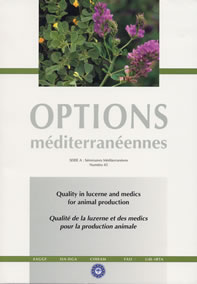| p. 13-18 | Article suivant |
The evolution of fodder dehydration in Spain: Future prospects
Spain has become the EU leader, in terms of dried fodder, with a production of approximately two million tons. The Spanish climatic conditions favour a dehydration system, which combines the artificial drying techniques and the exploitation of the solar radiation. There are around 170,000 ha in Spain dedicated to fodder transformation, principally located in the area of the Ebro Valley, with lucerne as the main crop and representing 92 per cent of the total production. The rest of the crops are vetches, raygrass, fescue and forage corn. There are 82 industries that transform the raw material, with a potential capacity of around 2.9 million t. Future prospects for dehydrated fodder are optimistic, since Europe has an important deficit as regards to vegetable protein production. The sector ensures the traceability, homogeneity, sustainability and respect for the environment required by the EU Agricultural Policy.
- [ Afficher ]
- [ Télécharger ]
- [ Exporter la citation ]
Vous pouvez télécharger la citation au format :
- [ Imprimer ]
-
Mots-clés
CAROUBE, FIBRE, LUZERNE, PROTEINE VEGETALECiter cet article
Ollé Marrugat F. The evolution of fodder dehydration in Spain: Future prospects. In : Delgado I. (ed.), Lloveras J. (ed.). Quality in lucerne and medics for animal production . Zaragoza : CIHEAM, 2001. p. 13-18. (Options Méditerranéennes : Série A. Séminaires Méditerranéens; n. 45). 14. Réunion Eucarpia du Groupe Medicago spp., 2001/09/12-15, Zaragoza and Lleida (Spain). http://om.ciheam.org/om/pdf/a45/01600048.pdf



